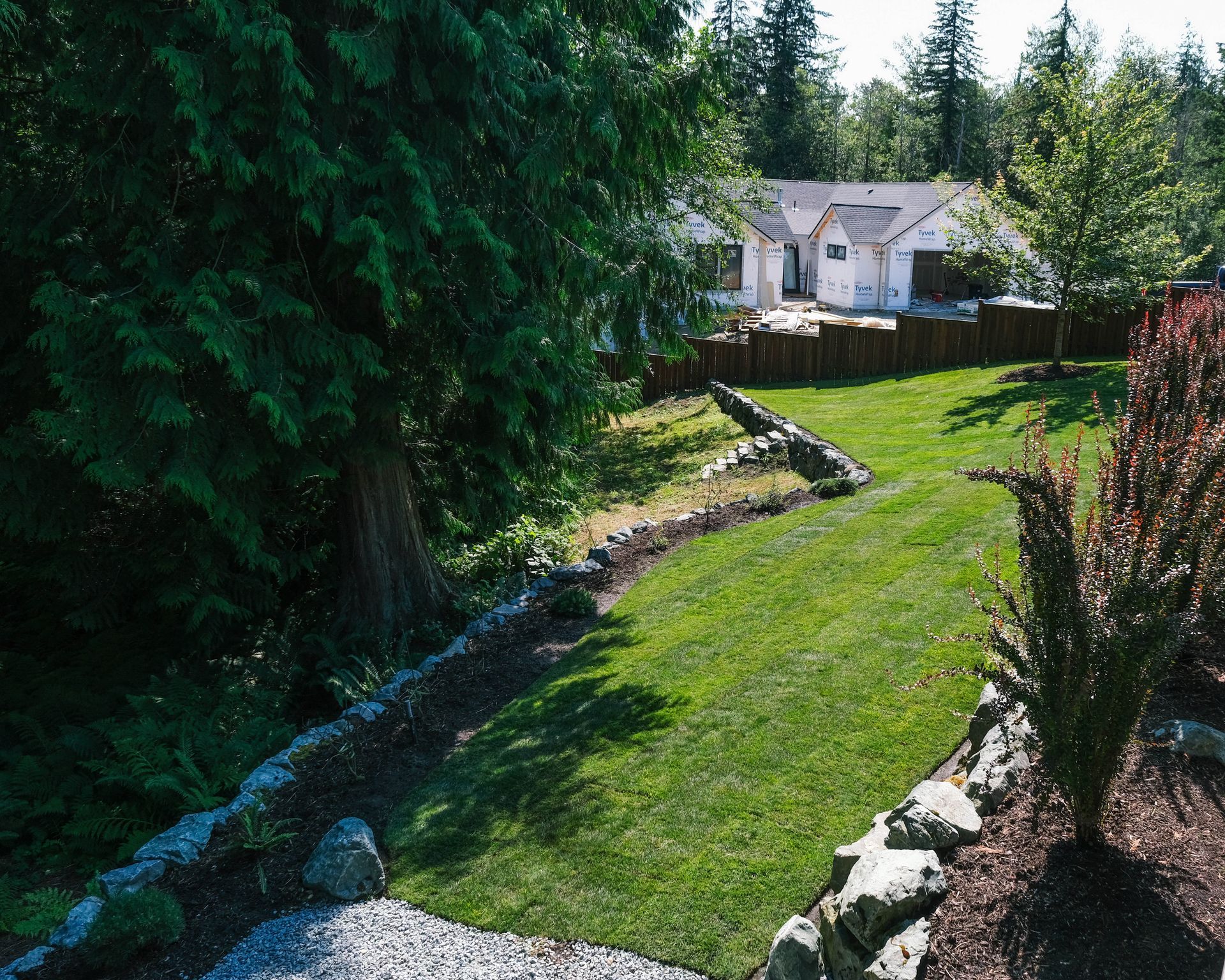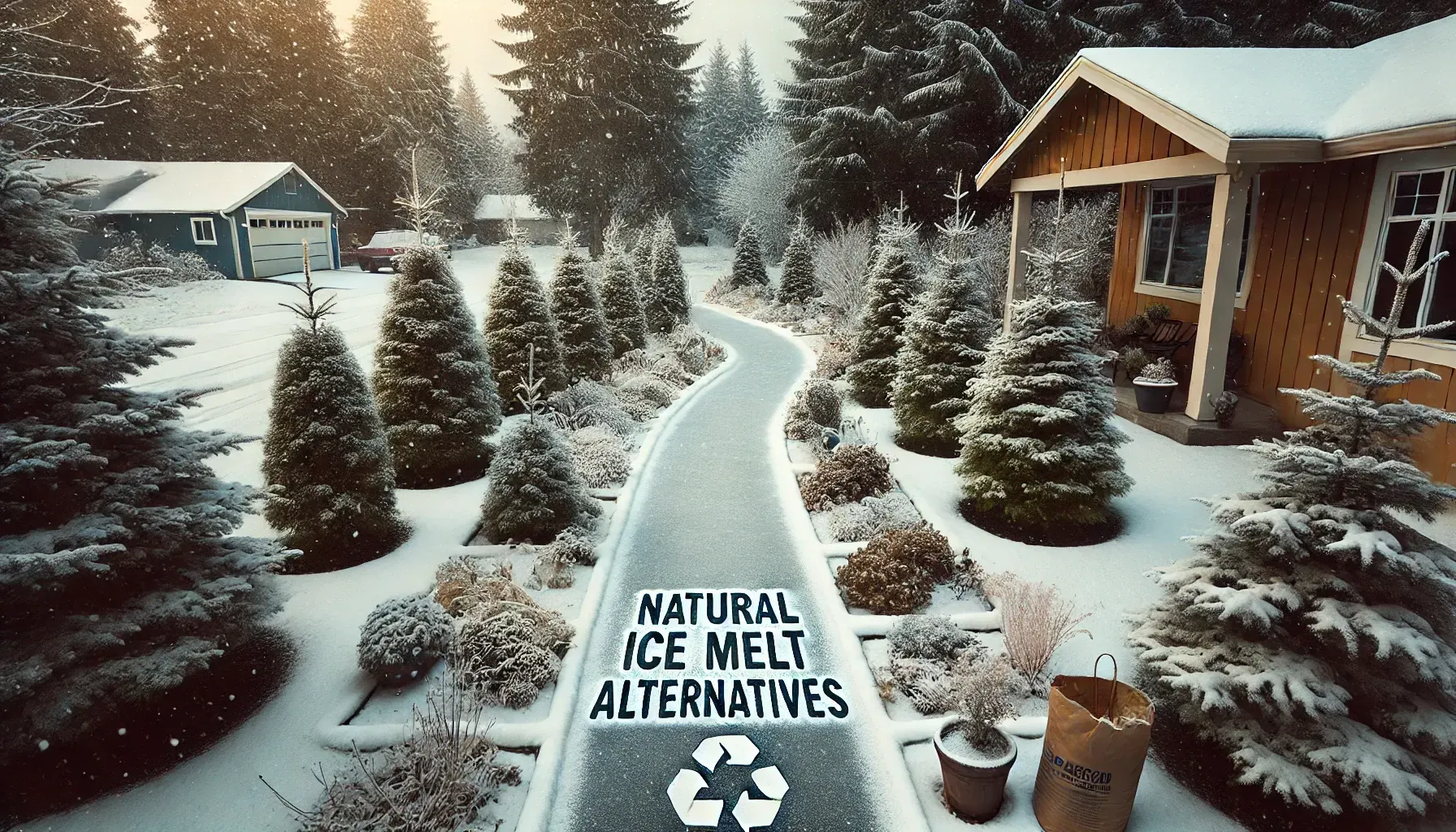Wake Up Your Lawn the Right Way After a Long, Wet Winter

✅ 1. Rake Out Winter Debris
Let’s start with the basics. After months of rainfall, your lawn is likely compacted and layered with soggy leaves, pine needles, and maybe a few rogue branches.
Why it matters:
Dead grass and debris can smother new growth and invite mold, pests, or disease.
Tip:
Use a sturdy rake or dethatching rake to loosen the top layer and allow light and air to reach the soil. Avoid raking too early—wait until the lawn dries out a bit to prevent tearing up new growth.
✅ 2. Test Your Soil
PNW soils tend to be acidic, especially if you’re surrounded by evergreen trees. It’s worth checking your soil’s pH to see if it needs some love.
Why it matters:
Grass thrives in soil with a pH between 6.0 and 7.0. Too acidic? Grass struggles. Moss thrives.
Tip:
Grab a DIY pH test kit from a local garden center. If your soil is too acidic, apply lime to help balance it out.
✅ 3. Aerate Compacted Soil
After a rainy winter, your soil is probably dense and gasping for air.
Why it matters:
Aeration allows water, oxygen, and nutrients to reach the roots. This is especially helpful for heavy clay soils (common in areas like Everett or Mount Vernon).
Tip:
You can rent a core aerator or hire a pro. Early spring is a great time to aerate before major growth begins.
✅ 4. Overseed Bare Spots
Got patchy areas? You’re not alone. Between pets, puddles, and foot traffic, bare spots happen.
Why it matters:
Overseeding thickens your lawn, helping crowd out weeds and giving it a lush, even look.
Tip:
Use a seed blend made for Pacific Northwest conditions—look for perennial ryegrass or fescue mixes. Spread seed after aerating, then lightly rake and water consistently until it sprouts.
✅ 5. Apply a Slow-Release Fertilizer
Don’t go overboard here. Your lawn’s still waking up—think of this as a morning smoothie, not a triple shot of espresso.
Why it matters:
The right fertilizer supports root growth and helps your lawn green up gradually without burning.
Tip:
Choose a slow-release fertilizer with balanced nitrogen (N), phosphorus (P), and potassium (K). If you’ve already added lime, wait a few weeks before fertilizing to avoid chemical conflict.
✅ 6. Start Mowing (But Not Too Short)
Once the grass hits about 3 inches tall, it’s time to give it a trim.
Why it matters:
Cutting too short stresses the lawn and makes it vulnerable to weeds and drought.
Tip:
Set your mower blade to 2.5–3 inches. Keep those blades sharp—dull ones tear the grass and leave it open to disease.
✅ 7. Tackle Moss & Weeds Early
If your lawn looks more like a moss garden than a grassy yard, you’re not alone—this is classic PNW lawn drama.
Why it matters:
Moss thrives in shade, moisture, and compacted soil. Early treatment gives your lawn a head start.
Tip:
Apply iron-based moss control products. For weeds, consider spot-treating or pulling them manually while the soil is soft.
✅ 8. Check Your Irrigation System (If You Have One)
You may not need to water much in spring, but now’s the time to make sure everything’s working before the summer dry spell hits.
Why it matters:
A leaky or poorly calibrated system wastes water—and money.
Tip:
Run your system, check for leaks, and adjust sprinkler heads to avoid overspray. Consider a smart timer that adjusts to local weather conditions.
🌼 Bonus Tip: Mulch Around Garden Beds & Trees
While you’re out there, throw down some mulch. It helps retain moisture, suppress weeds, and looks great.
Ready to Roll Into Spring?
Caring for your lawn in the Pacific Northwest is part art, part science, and a little bit of patience. If it all feels like a lot, don’t worry—you’re not alone. Whether you need help aerating, overseeding, or just want someone to handle the whole spring refresh, we’re here to help.
👉 Contact Skagit Branches for a free lawn assessment and estimate. Let’s make this your lawn’s best year yet.




Share On: